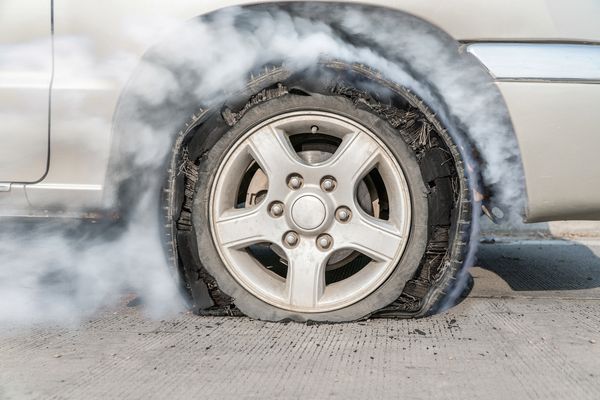
You trust your car to get you safely from point A to point B, but when a defect undermines that trust, it can lead to devastating consequences. Whether it’s a faulty airbag, defective brakes, or a structural flaw, these defects can cause serious injuries and significant financial losses.
Filing a car defect lawsuit can be a powerful tool for holding manufacturers accountable and securing the compensation you deserve. This comprehensive guide will walk you through the essential steps and legal considerations in filing a car defect lawsuit in Missouri, helping you confidently navigate this challenging process.
Keep reading for more from our Kansas City car defect attorneys, then reach out online or at (866) 931-2115 to schedule a free consultation.
The nine most commonly defective car parts
Car defects can affect various components, each presenting unique dangers and challenges. Here are some of the most commonly defective car parts that often lead to lawsuits:
- Airbags – Issues may include failure to deploy during a collision, unexpected deployment, or inflating with too much force. The infamous Takata airbag recall highlighted the dangers of defective airbags, which could explode and send shrapnel into the vehicle.
- Brakes – Common brake-related defects include brake pad failure, brake fluid leaks, and ABS malfunctions.
- Tires – Problems with tires include tread separation, blowouts, and sidewall failures.
- Seat belts – Defective seat belts might fail to latch, have inadequate restraint, or have retraction issues.
- Steering components – Common steering-related defects include power steering failure, steering column issues and rack and pinion defects.
- Fuel systems – Fuel system defects pose a serious risk of fire or explosion. Issues might include fuel leaks, fuel pump failures, and faulty fuel injectors.
- Electrical systems – Electrical defects can affect various vehicle functions, from lighting to critical safety systems. Common issues include battery problems, wiring issues, and malfunctioning sensors.
- Engine and transmission – Engine and transmission defects can cause significant performance and safety issues. Examples include engine failures and transmission problems.
- Structural integrity – Structural defects affect the overall safety of the vehicle. Common issues include frame and roof weaknesses.
| Related articles: |
Understanding car defects
Car defects can occur at any stage of the vehicle’s lifecycle, from design and manufacturing to marketing. Understanding the types of defects is crucial for building a strong case.
Design defects
Design defects are inherent flaws in the vehicle’s design that make it unsafe. These defects are present in every unit produced, often leading to widespread recalls. Examples include vehicles prone to rollover or those with structurally weak roofs.
Manufacturing defects
Manufacturing defects occur during production and may affect only a subset of vehicles. Common issues include faulty airbags, defective tires, and brake failures.
Marketing defects
Marketing defects involve improper instructions or failure to warn consumers about potential risks. This can include inadequate safety warnings or incorrect usage instructions.
| Related article: These are the most common car defects to watch for |
Legal framework for car defect lawsuits in Missouri
Missouri has specific laws that protect consumers and allow them to seek compensation for damages caused by defective vehicles. Key statutes include:
- Missouri Products Liability Law – Governs product liability claims, including those involving car defects. This law allows consumers to hold manufacturers, distributors, and sellers accountable for defective products.
- Missouri Merchandising Practices Act (MMPA) – Protects consumers from deceptive and unfair practices. It can be used in cases where manufacturers or dealers misrepresent the safety of a vehicle.
Steps to filing a car defect lawsuit
1. Gather evidence
Collecting evidence is the first and most crucial step in building your case. This includes:
- Vehicle documentation – Keep all records related to your vehicle, including purchase receipts, maintenance records, and recall notices.
- Accident reports – Obtain copies of any police reports or accident documentation.
- Medical records – Document all injuries and medical treatments related to the car defects.
- Photographs – Take photos of the vehicle, the defect, and any injuries sustained.
2. Consult with an experienced attorney
At Langdon & Emison, our attorneys specialize in car defect lawsuits and can provide expert guidance on the legal process. An experienced attorney can help you:
- Evaluate your case – Determine the strength of your claim and identify potential defendants.
- Gather additional evidence – Work with experts to analyze the defect and its impact.
- File the lawsuit – Ensure all legal documents are prepared and filed correctly.
3. File the complaint
Your attorney will draft and file a complaint in the appropriate Missouri court. The complaint should detail:
- The defect – Describe the specific car defect and how it caused harm.
- The parties involved – Identify the manufacturer, distributor, and other responsible parties.
- Damages – Outline the injuries and losses suffered due to the defect.
4. Discovery process
Both parties exchange information and gather evidence to support their claims during discovery. This can include:
- Depositions – Sworn statements from witnesses and experts.
- Interrogatories – Written questions that must be answered under oath.
- Document requests – Requests for relevant documents and records from the other party.
5. Settlement negotiations
Many car defect lawsuits are resolved through settlements before reaching trial. Your attorney will negotiate with the defendants to seek a fair settlement that compensates you for:
- Medical expenses – Costs of treatment, rehabilitation, and ongoing care.
- Lost wages – Compensation for income lost due to the injury.
- Pain and suffering – Damages for physical and emotional distress.
6. Trial
Your case will proceed to trial if a settlement cannot be reached. During the trial, both sides will present their evidence and arguments. The court will then decide whether the defendants are liable for the defect and determine the amount of compensation to be awarded.
Important considerations
In Missouri, the statute of limitations for filing a car defect lawsuit is generally five years from the date of injury or discovery of the defect. Fulfilling your claim within this time frame is crucial to maintain your right to seek compensation.
Contact Langdon & Emison
At Langdon & Emison, we are dedicated to helping victims of car defects secure the compensation they deserve. Our experienced attorneys have a proven track record of successfully handling car defect lawsuits. Contact us today for a free consultation to discuss your legal options and how we can assist you.
Contact us online or call (866) 931-2115 to learn how we can help you with your car defect lawsuit.


